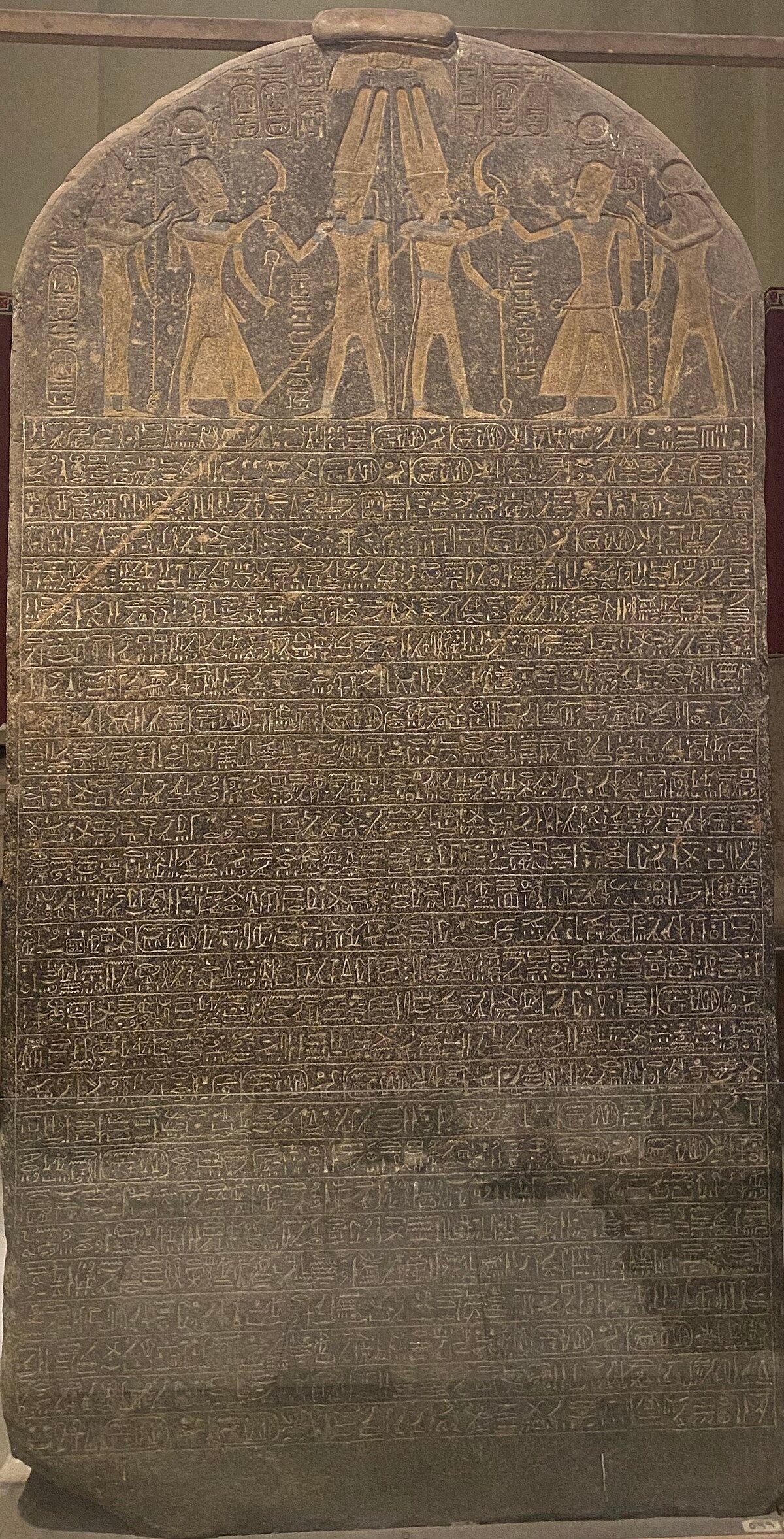Contrasting the ancient with the modern, the search for the oldest archaeological find in the Bible leads scholars through layers of history. Numerous artifacts have emerged over the years, shedding light on biblical narratives and the civilizations they describe.
However, amidst the sands of time, one discovery stands out as a pivotal piece in unraveling the mysteries of the past. This find not only challenges conventional timelines but also offers a glimpse into the early interactions between ancient peoples and the emergence of biblical stories.
Early Evidence of Biblical Texts
The Merneptah Stele, dating back to around 1208 BCE, provides early archaeological evidence of biblical texts through its mention of 'Isrir' or Israel as enemies of Egypt. Discovered in 1896 by Flinders Petrie, this stele is a significant artifact shedding light on the historical context of ancient Israel and its interactions with Egypt in the ancient Near East.
The mention of Israel on the Merneptah Stele is important as it offers one of the earliest direct references to Israel as a people in the archaeological record.
This archaeological find contributes to our understanding of early biblical texts and the presence of Israel in Canaan during that period. The inscription on the stele not only confirms the existence of Israel but also places them in a geopolitical context, indicating their presence and influence in the region during the reign of Merneptah.
Ancient Pottery and Artifacts
Among the archaeological discoveries shedding light on ancient civilizations, ancient pottery and artifacts stand as important pieces revealing insights into daily life, trade, and cultural practices of past societies.
- Pottery fragments unearthed in biblical sites like Jericho and Megiddo date back to the Neolithic period, approximately 7000-6000 BC, showcasing early forms of pottery craftsmanship.
- Pottery shards from the Iron Age, spanning from 1200 to 586 BC, provide a window into the lives of ancient Israelites, offering clues on their domestic activities, economic practices, and religious customs.
- Artifacts such as oil lamps, storage jars, and cooking vessels excavated in archaeological sites not only showcase the material culture of biblical times but also highlight the technological advancements and artistic expressions of ancient societies.
The meticulous study of ancient pottery shapes, decorations, and techniques plays an important role in dating archaeological layers and unraveling chronological sequences in biblical contexts. Pottery typologies like Red Slip Ware and Black-on-Red Ware aid archaeologists in categorizing and analyzing pottery assemblages from different periods in biblical history, enabling a deeper understanding of the evolution of ceramic traditions and cultural interactions in the ancient Near East.
Earliest Known Biblical Inscriptions
Earliest biblical inscriptions, dating back to ancient times, offer valuable insights into the early writings and historical events of the biblical era. Among these ancient inscriptions, the Tel Dan Inscription stands out as the earliest known biblical inscription, dating to the 9th century BC. Discovered in northern Israel, the Tel Dan Inscription contains the phrase 'house of David,' providing significant archaeological evidence for the existence of King David as mentioned in the Bible.
The significance of the Tel Dan Inscription lies in its role in confirming the biblical narrative of the Davidic dynasty. By mentioning the 'house of David,' this inscription aligns with the biblical accounts of the lineage of King David and the establishment of the Kingdom of Judah. This discovery is paramount in biblical archaeology as it sheds light on the early monarchy period in ancient Israel, offering tangible proof of the historical figures and events described in the biblical texts.
The Tel Dan Inscription serves as a tangible link to the past, connecting modern scholars to the early biblical figures and providing a glimpse into the political landscape of the ancient Kingdom of Judah during King David's reign. This archaeological find not only validates biblical accounts but also enriches our understanding of the historical context of the early biblical narratives.
Prehistoric Biblical Archaeological Discoveries
One remarkable prehistoric biblical archaeological discovery sheds light on ancient societies and their interactions in the region. The Merneptah Stele, dating back to around 1208 BCE, is a significant archaeological find that mentions 'Isrir' or Israel among the enemies, providing early evidence of Israel's presence in Canaan.
This inscription is important for understanding the early history and presence of Israel in the ancient Near East. The Merneptah Stele offers valuable insights into the geopolitical landscape of the time and the interactions between ancient societies in the region.
Origins of Biblical Civilizations
The exploration of biblical civilizations encompasses various significant sites that offer valuable insights into the origins and development of ancient societies in the region. Sites like the Wilderness of Zin, Bethlehem, Jericho, Galilee, and Jerusalem play pivotal roles in understanding biblical civilizations.
The Merneptah Stele, dating back to around 1208 BCE, mentioning 'Isrir' or Israel among its enemies, provides essential historical context. Excavations conducted by renowned archaeologists such as Flinders Petrie and Kathleen Kenyon have contributed immensely to unraveling the mysteries of biblical history. The discovery of the Dead Sea Scrolls in the mid-20th century has been instrumental in shedding light on the religious practices of ancient times.
Bethlehem, associated with the matriarch Rachel and Christ's preaching in Galilee, remains a focal point for pilgrims and researchers alike. Jericho's ancient ruins, considered one of the oldest inhabited cities globally, offer a glimpse into early urbanization. Jerusalem, with its rich history and religious significance, continues to be a site of archaeological exploration and spiritual reverence.
The continuous excavations and studies of these biblical sites provide a deeper understanding of the origins and evolution of biblical civilizations, shaping our comprehension of ancient societies in the region.



